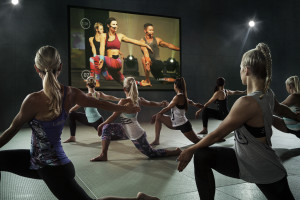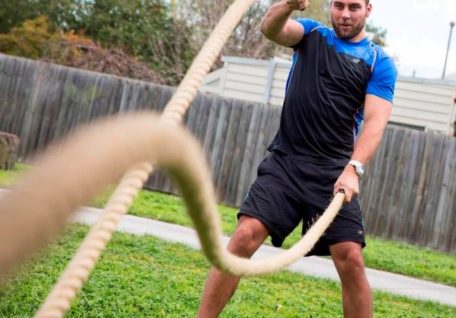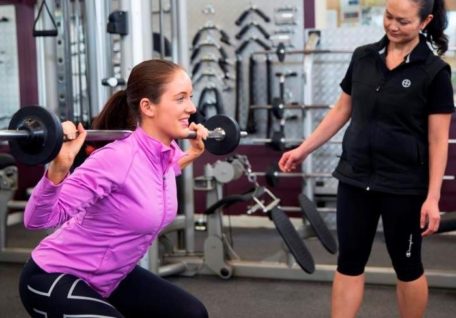You’ve decided that becoming a personal trainer is the career path you want to take, and why wouldn’t it be? You can be your own boss, work the hours you want to, work in an environment you love, work with people you want to work with and, in many ways, dictate your own wage. You also get to help people achieve their goals. It’s fun and fulfilling, and there are so many opportunities for you to expand and broaden your skills.
The question facing many people is ‘how do I become a personal trainer?’. We’ve put together a broad step-by-step guide to help you through the process.
1. Do Your Research
Reading this blog post is perhaps part of that research. The first thing you’ll need to know is what qualifications you need. These are the Certificate III and IV in Fitness – the nationally recognised personal training qualifications. You don’t need a diploma or degree to become a personal trainer. The Certificate III in Fitness will allow you to become a Gym Instructor and run organised classes, for example LesMills®, Spinning® or Zumba®. Instructing these types of classes also require specific qualifications from those organisations.
The Certificate IV in Fitness allows you to become a fully-fledged Personal Trainer. Most training providers give a good discount if you opt to study both Cert III and IV concurrently, and having both qualifications makes you far more employable. It gives you a lot more options in the future, like running bootcamps, training clients one-on-one or groups of clients, setting fitness goals and more.
Next you’ll want to know how much time you’ll need to commit to the course and then decide what learning method best suits you. If, for example, you have a full-time job or look after young children, you might not be able to attend face-to-face classes, so learning online might suit you. If you don’t learn well without being in a classroom environment, then a face-to-face course will be more appropriate. You’ll also want to know how much the course is going to cost and if you can afford it. If you can’t afford an upfront fee, are there are payment options that will help you?
2. Choose Who to Study With
Much of the above research will help you when it comes to deciding which fitness training provider you should study with. For example, if you want to study online, with an interest free payment option of $50/week, you might choose to study with us. Studying online is becoming ever more popular in all fields of study, and personal training is no different. It is why we have invested so much time into making our online platform easy to use and full of every resource you need to attain your qualifications. It’s an extremely powerful way to learn, and gives you the most flexibility. However, if you only learn well in a face-to-face situation, and you’re living in Perth, you might need to find a provider teaching face-to-face courses in that city.
When choosing a provider, it’s important to look at their experience within the industry. Some providers don’t last long in the industry because they simply don’t have an understanding of the needs of the student. Find out how long have they been teaching fitness courses. Search for any press that might be out there. Visit their Facebook page, Instagram page, and read some of their blog posts. If they are not active, they might not be as heavily invested in the industry as they might appear.
It’s also key to bear in mind that cheap doesn’t necessarily mean it’ll be a worthwhile course, and expensive doesn’t necessarily mean the course will be amazing. So it’s vital to consider more than just price in selecting where you study. Have a good conversation with each provider you’re looking into. Make a list of questions you want answered, and ask them. This is an important step; you want to get the training provider right.
3. Get Your Qualifications
Once you’ve chosen a provider and have started your course, commit to it and finish it. Set goals and timelines, and try to adhere to them. Use the support services of the training provider when you need them. This part is obvious. Get your qualifications!
4. Join Fitness Australia or Physical Activity Australia
Once you have your qualification you can get professional membership to either of these two organisations. As a student you can join Fitness Australia for free, and test the water.
This isn’t strictly a necessity for becoming a personal trainer, however, they provide you with peace of mind and one of the most important things: insurance. This will cover you for professional indemnity, public liability and product liability. Things you just shouldn’t be without if you’re training clients.
Fitness Australia are the largest professional body for exercise professionals in Australia, and have many different membership levels depending on what you intend to do. Read through them and make a decision based on what you require.
Joining one of these associations also helps you to maintain your qualifications and keep your professional credentials intact.
5. Get a Job
This first job doesn’t necessarily have to be the dream job just yet. It can be an important learning step to join a gym as a personal trainer, taking classes and building up some experience. Depending on where you want to take your career, this is key to not only learning from other personal trainers, but also great for building a network of potential clients for the future. It will also help build your confidence when training people in the real world. If you need help getting into a gym we can help set up an interview with a gym within our network of partners.
6. Define a Niche or Specialty
As well as gaining some much needed experience it can be a good idea to identify a specialty. Something you can become a leader in, or an expert in. This is great to help you target more specific clients. It’s good to focus on something you’re interested in, as it will make your job more fun.
Once you have a niche in mind—be it training the elderly, children, sports teams or weight-loss clients—you can focus your efforts and outreach based on that niche. Your marketing material and website will become more targeted and it will make professional development easier. You’ll be able to relate to your clients well and have an understanding of any trends within that niche.
To reiterate, the advantages of specialising are that you will attract clients from that niche more easily, your professional development can be very specific, and you’ll enjoy working with people with the goals you’re interested in.
7. Continue to Study
As mentioned above briefly, you need to keep studying. Whether that is in the niche you’ve chosen, or in personal training and fitness education in general. Both Fitness Australia and Physical Activity Australia require a certain amount of continued learning in order to maintain your membership. This is important as it shows you are maintaining your knowledge and growing as an exercise professional. Taking CEC workshops is a great way to maintain those qualification and accreditations.
If you would like further information on a career in the fitness industry you are welcome to contact us and chat to our careers consultants.
What are the benefits of being a personal trainer?
1. Be your own boss
2. Choose your own hours
3. Work in an environment you love
4. Choose your clients
5. Dictate your wage
How do I become a personal trainer?
1. Do your research on necessary qualifications
2. Choose an educational authority for your qualifications
3. Get your qualifications
4. Join Fitness Australia or Physical Activity Australia
5. Get a job
6. Define a niche or speciality
7. Continue to study








